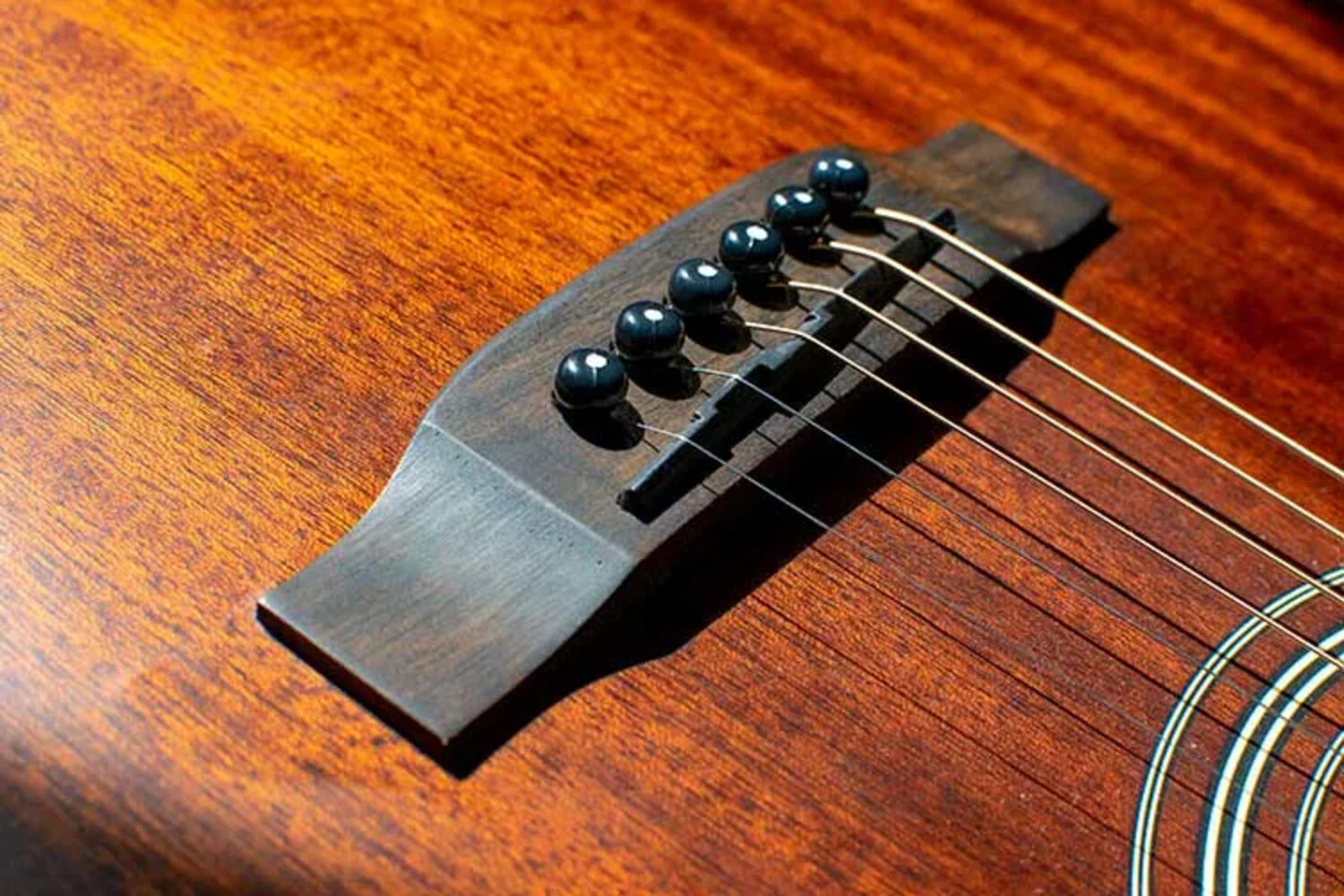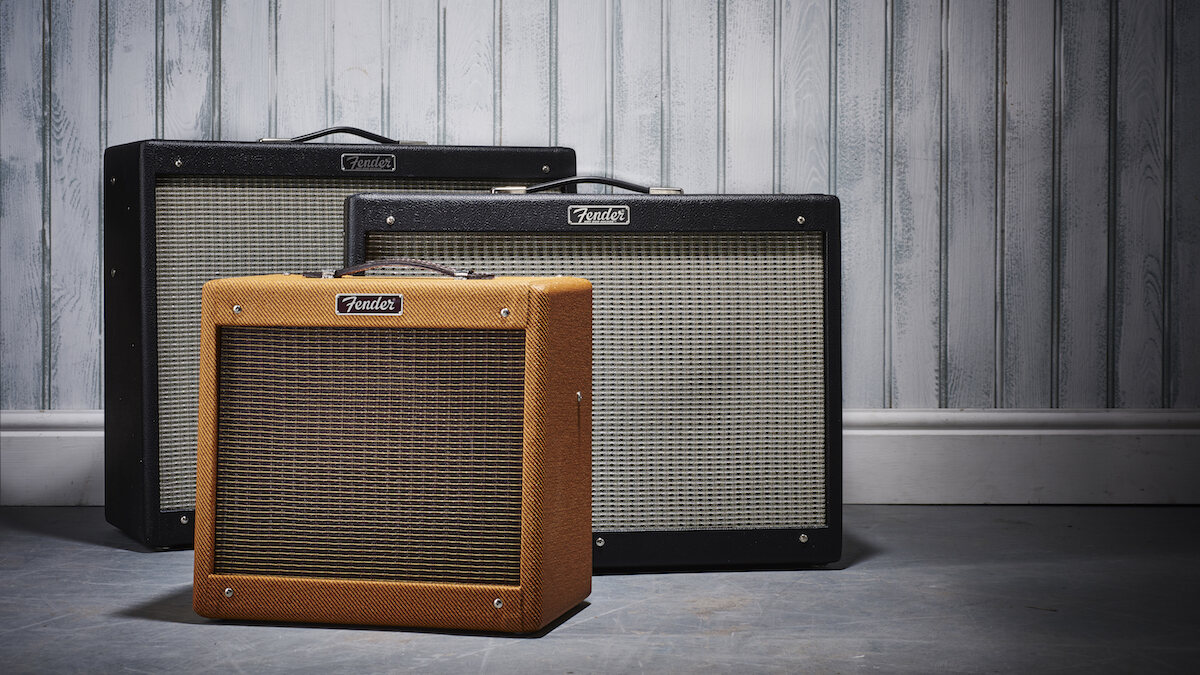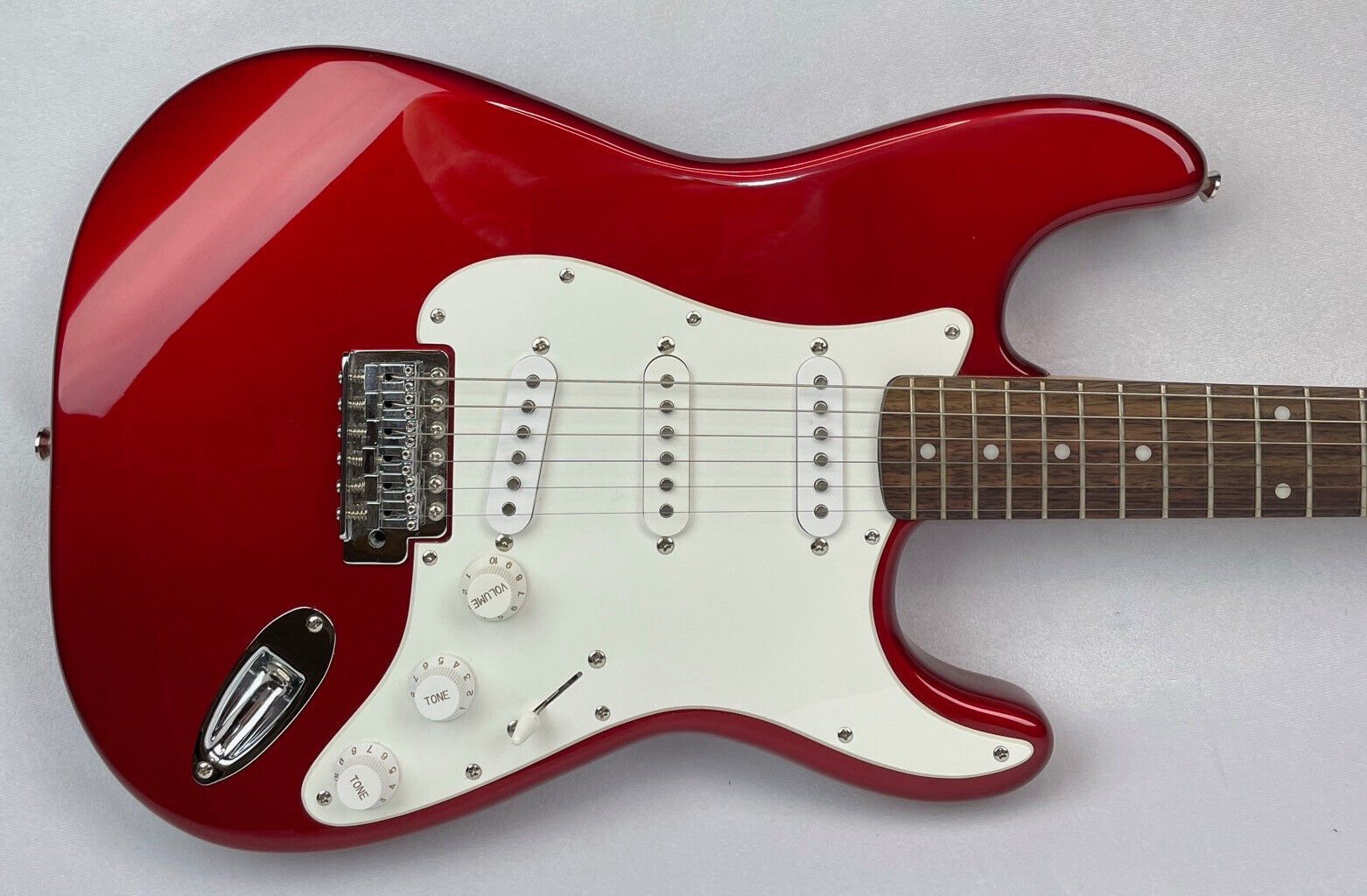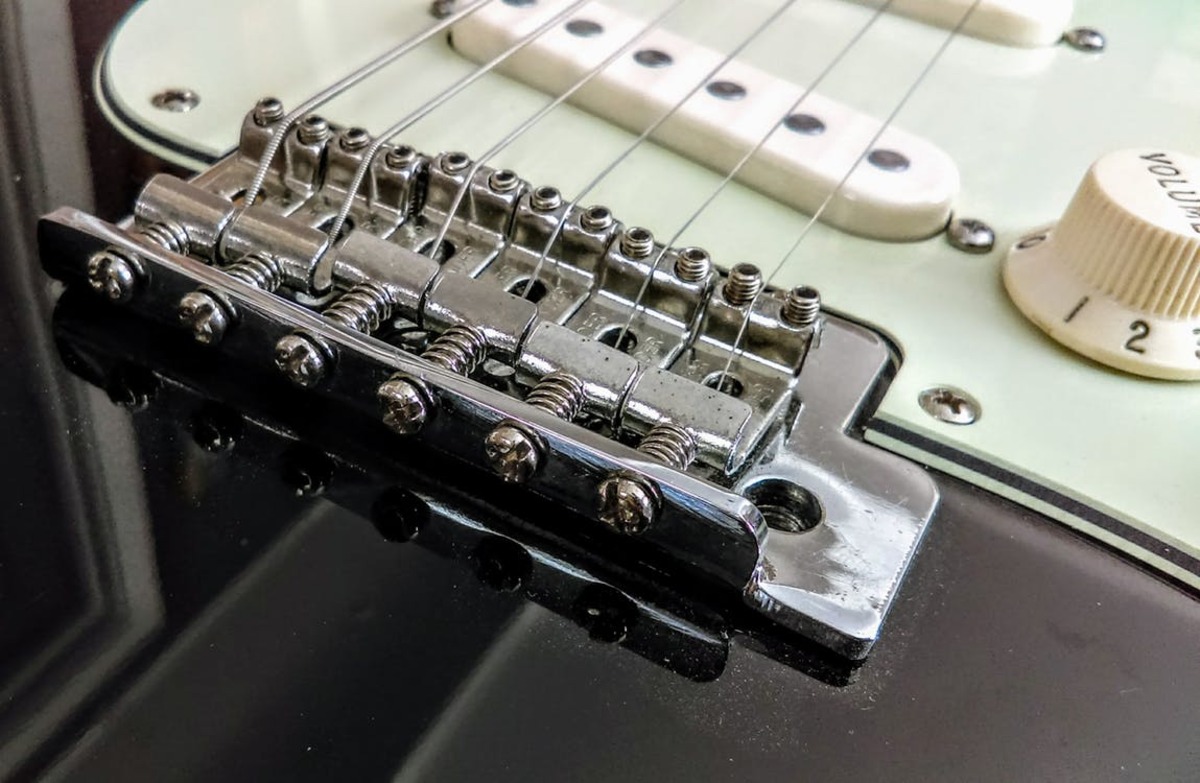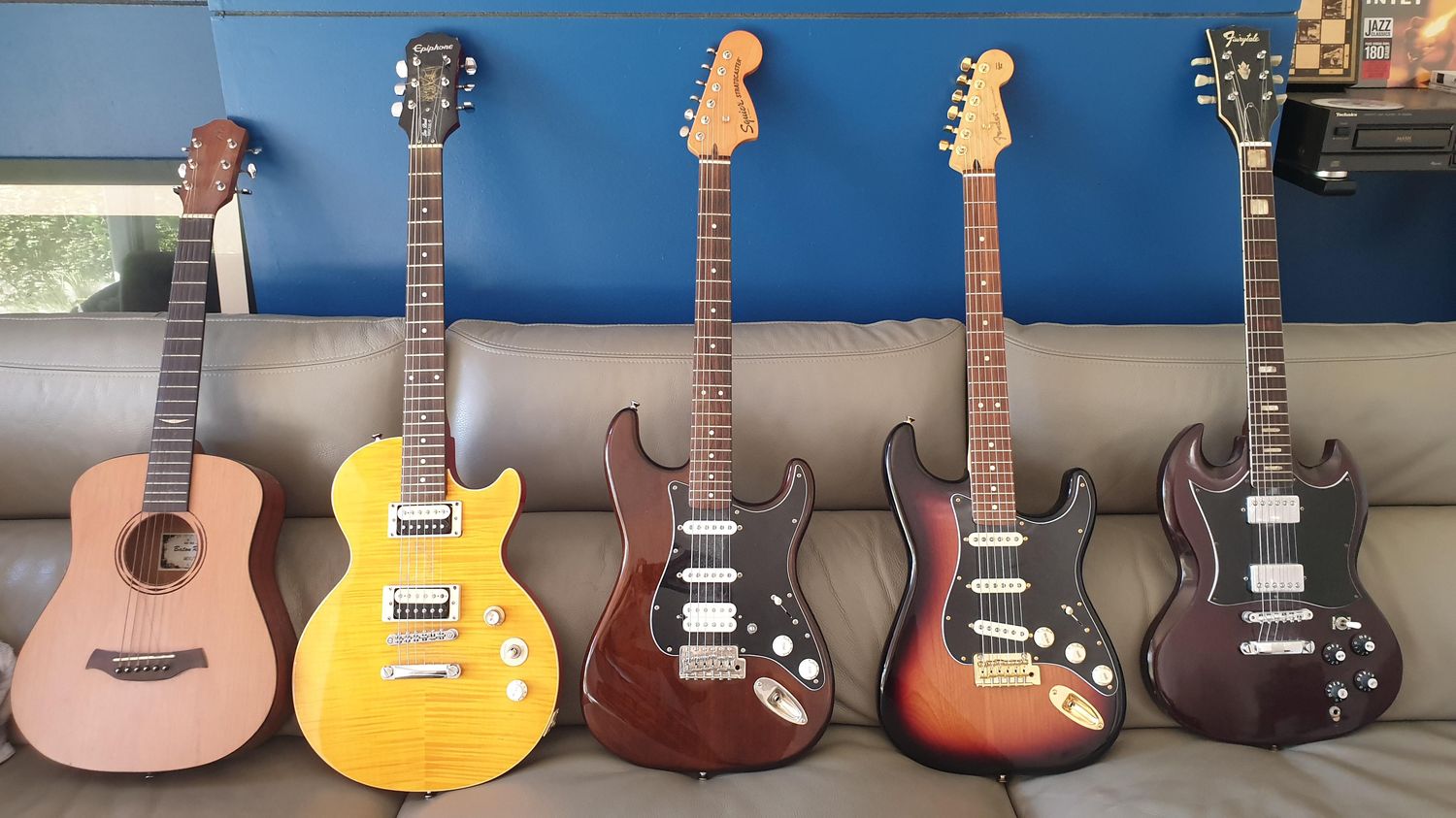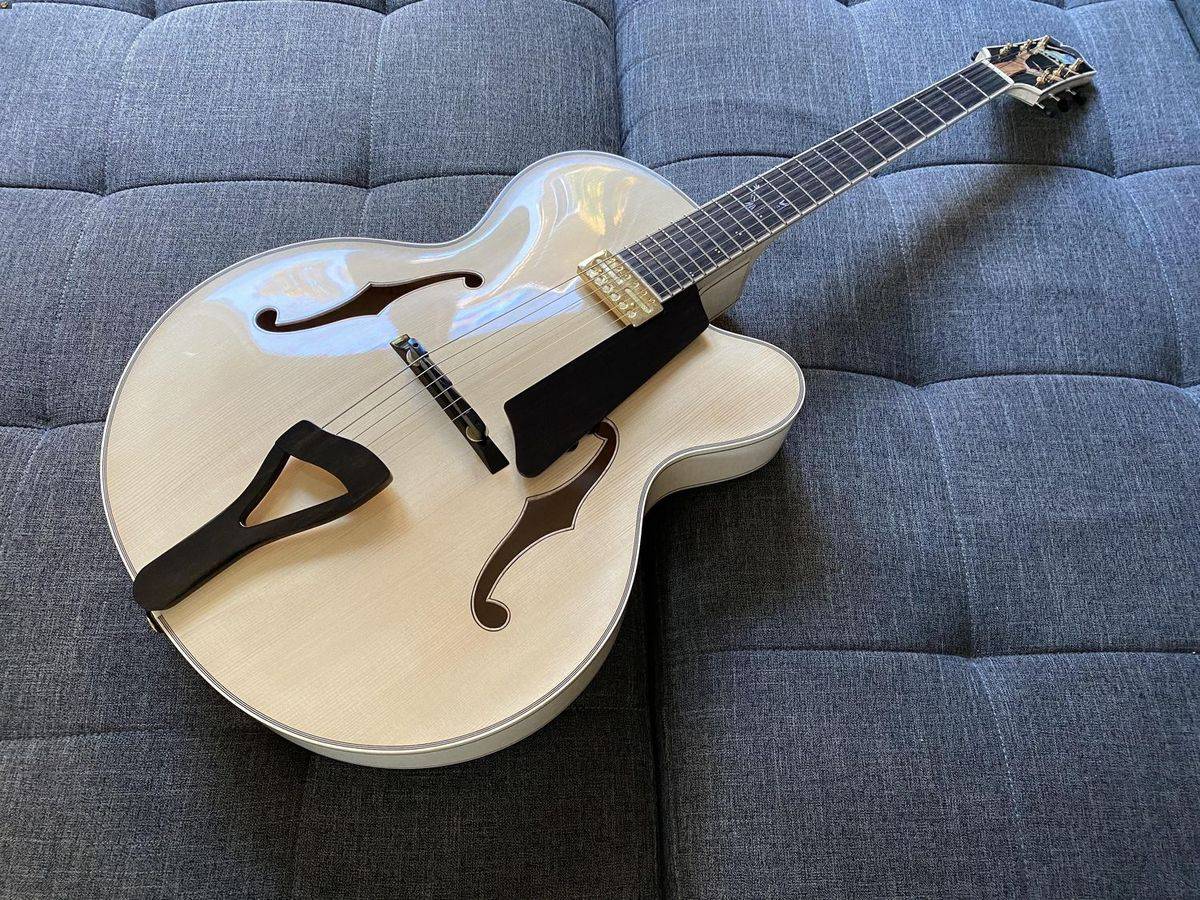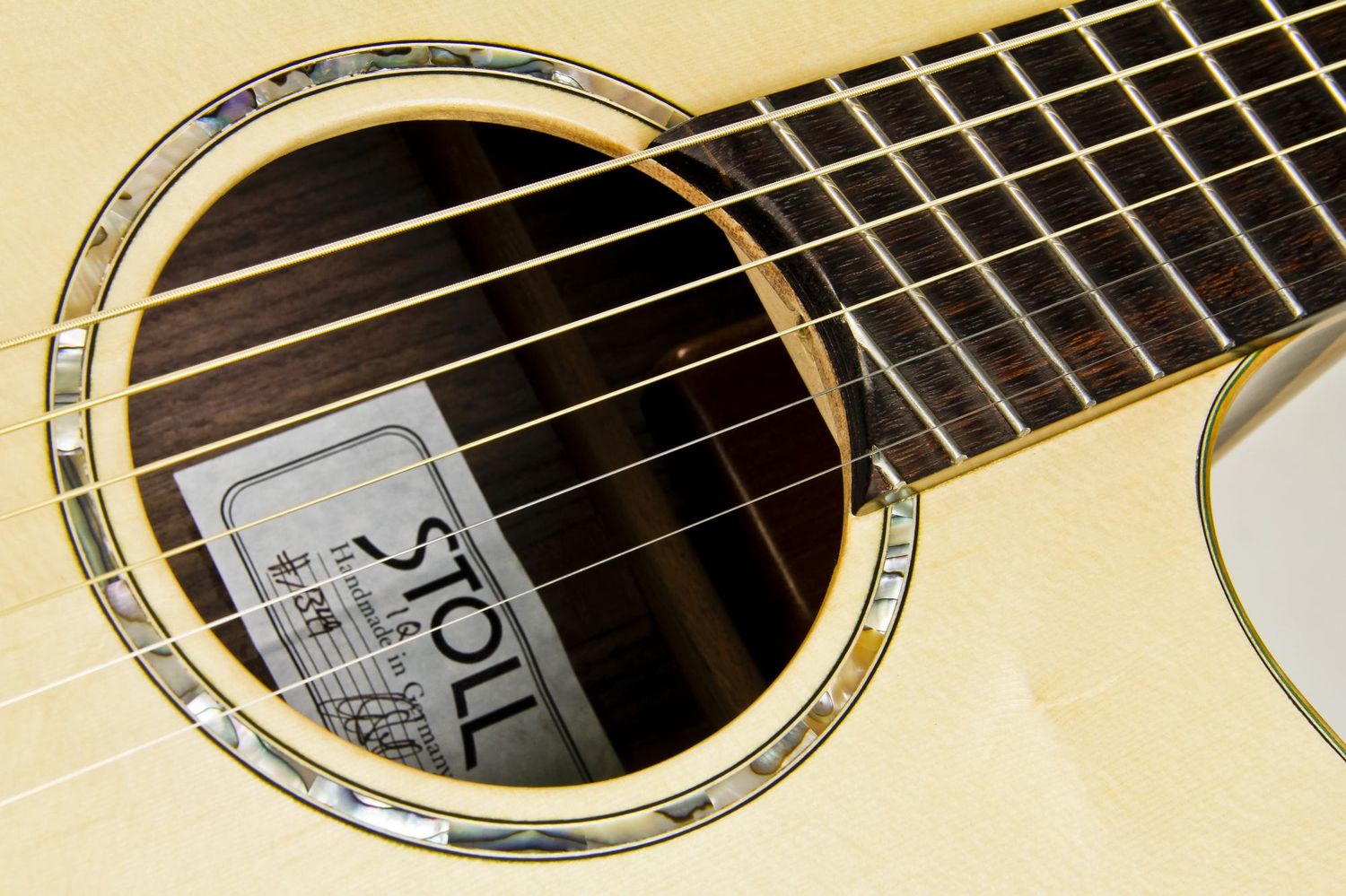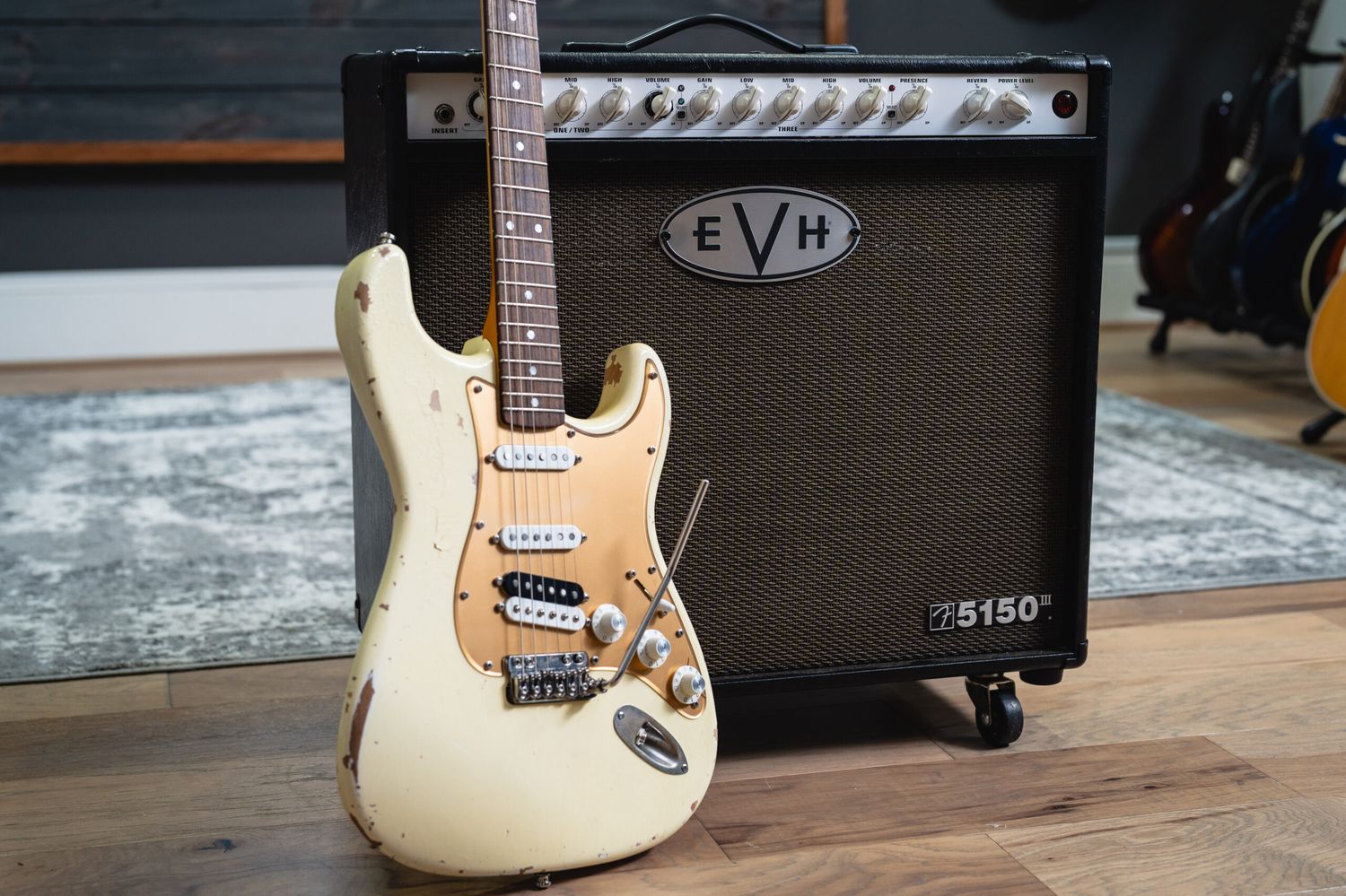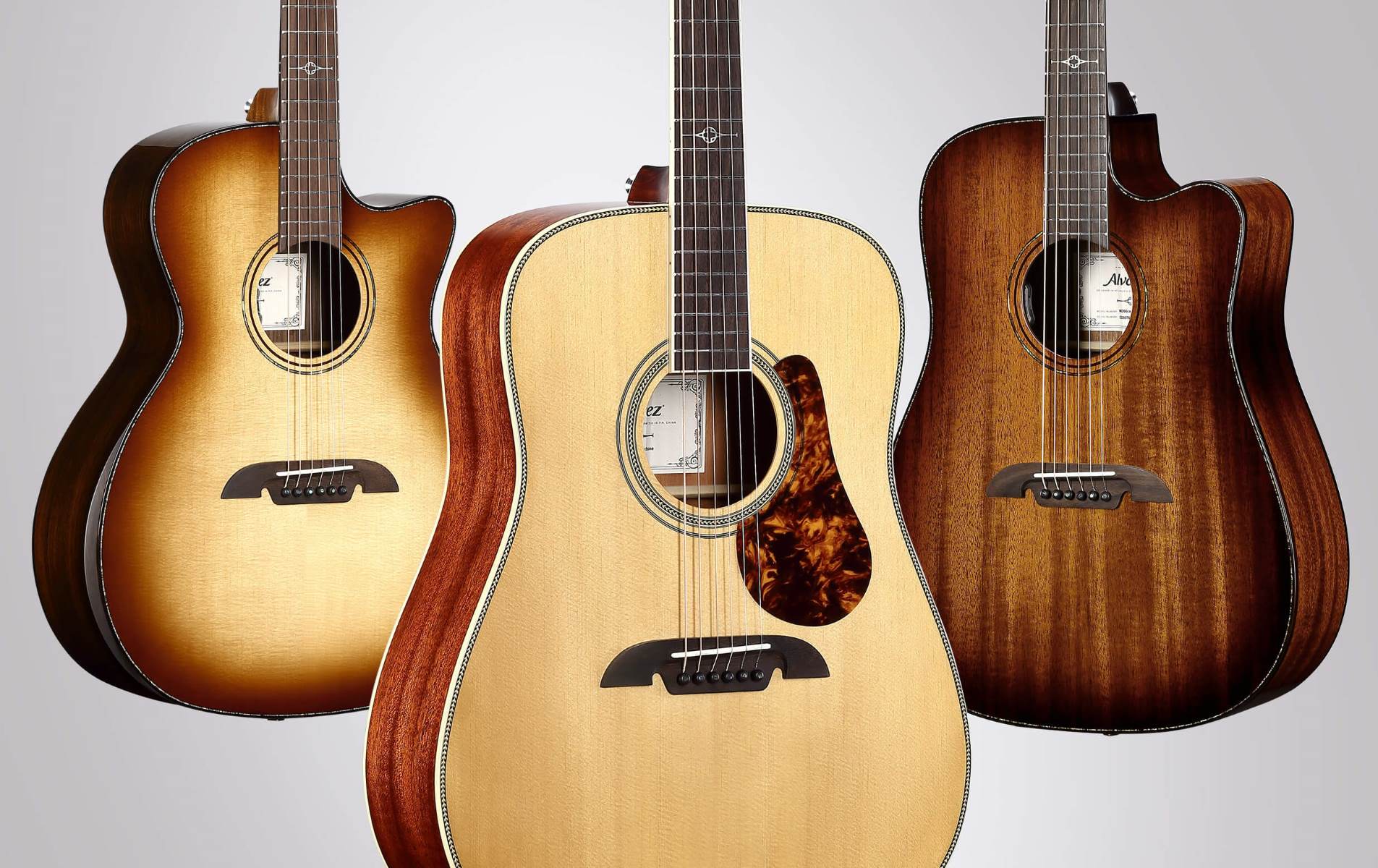Home>Instruments>Guitar>What Is A Preamp Guitar
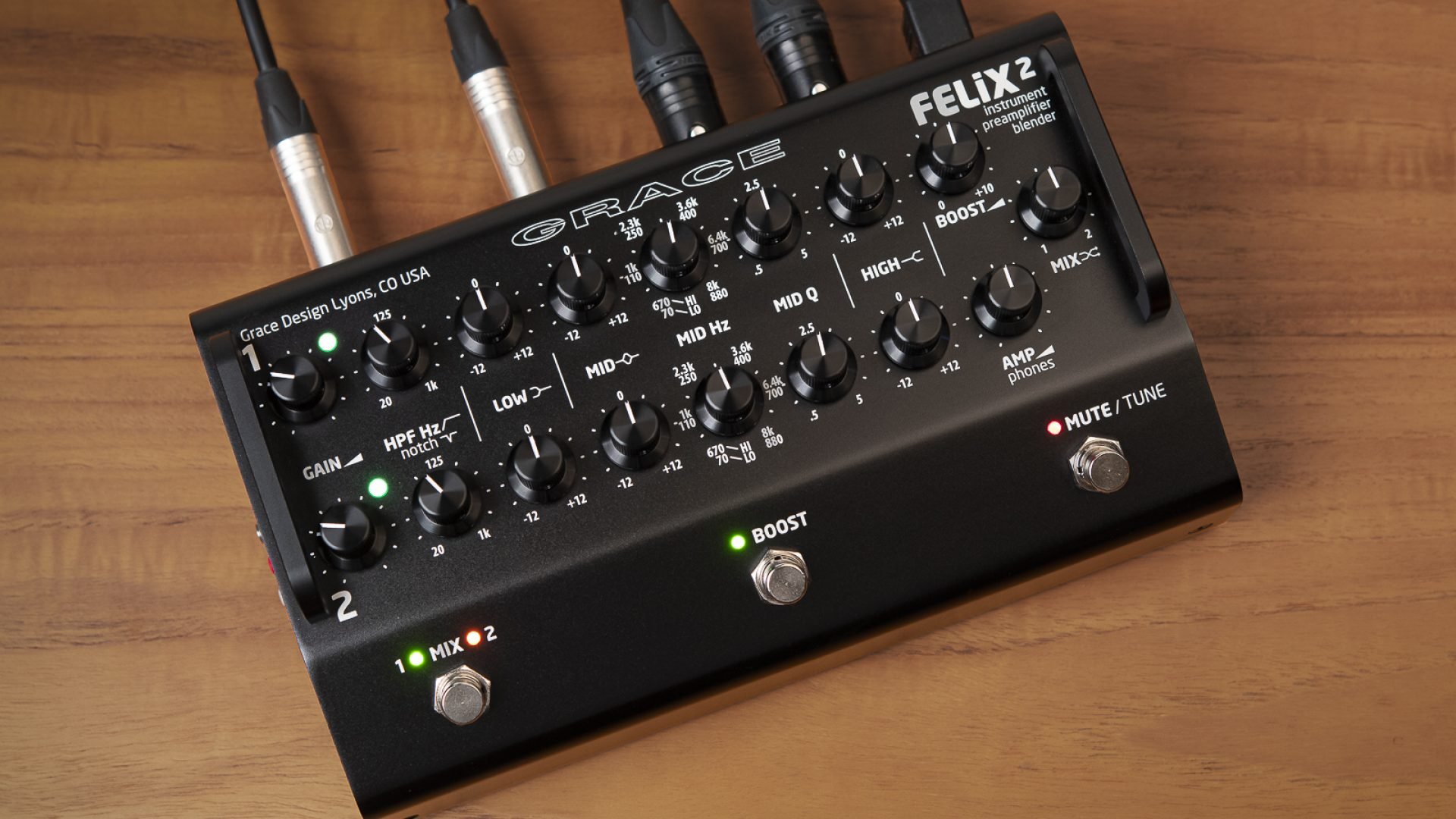

Guitar
What Is A Preamp Guitar
Published: February 15, 2024
Learn about the importance of preamp guitar technology and how it enhances the sound quality of your guitar. Discover the benefits of using a preamp for your guitar setup.
(Many of the links in this article redirect to a specific reviewed product. Your purchase of these products through affiliate links helps to generate commission for AudioLover.com, at no extra cost. Learn more)
Table of Contents
Introduction
Hey there, fellow guitar enthusiasts! If you've been delving into the world of guitars, you might have come across the term "preamp guitar." Whether you're a seasoned musician or just starting on your musical journey, understanding the role of a preamp in your guitar setup is crucial. In this article, we'll unravel the mysteries of preamp guitars, exploring their function, types, and the benefits they bring to your musical experience.
A preamp guitar, often referred to simply as a preamp, is a vital component that significantly influences the sound produced by your electric guitar. While the concept of preamps might seem daunting at first, fear not! We're here to demystify this essential piece of equipment and shed light on its significance in shaping your guitar's tonal characteristics.
So, what exactly is a preamp guitar, and why does it matter? Let's embark on a journey to uncover the intricacies of preamp guitars, unraveling their inner workings and the magic they bring to your musical performances. Whether you're a rock virtuoso, a blues aficionado, or an acoustic enthusiast, understanding the role of a preamp guitar can elevate your playing to new heights.
Now, let's dive into the world of preamp guitars and discover the wonders that await!
What Is a Preamp Guitar?
A preamp guitar, also known as a preamplifier or preamp, is an electronic device integrated into electric and acoustic-electric guitars to amplify the signal from the instrument’s pickups before it is further processed by an external amplifier or sound system. In essence, the preamp serves as a crucial intermediary between your guitar’s pickups and the amplification system, playing a pivotal role in shaping the tone and overall sound quality.
Typically housed within the guitar’s body or control cavity, the preamp is responsible for boosting the relatively weak signal generated by the pickups, ensuring that it is robust enough to be effectively processed and projected through speakers or headphones. This amplification process is essential for achieving the desired volume and tonal characteristics, allowing for greater control over the sound produced by the guitar.
One of the defining features of a preamp guitar is its ability to offer tone-shaping capabilities, often through the inclusion of onboard equalization (EQ) controls. These EQ adjustments enable players to tailor the frequency response of their instrument, allowing for adjustments to the bass, midrange, and treble frequencies to achieve a desired sonic profile. Additionally, some preamp guitars feature built-in effects such as reverb, chorus, or distortion, further expanding the sonic possibilities directly from the instrument itself.
It’s important to note that while preamp guitars are commonly associated with electric instruments, they are also integral to the functionality of acoustic-electric guitars. In the case of acoustic-electric models, the preamp not only amplifies the signal from the guitar’s pickups but also facilitates the blending of multiple pickup sources, such as under-saddle transducers and internal microphones, to achieve a balanced and nuanced acoustic tone when amplified.
Ultimately, a preamp guitar serves as a fundamental component in the signal chain of electric and acoustic-electric guitars, wielding significant influence over the instrument’s tonal characteristics and sonic versatility. Understanding the role of the preamp is essential for guitarists seeking to harness the full potential of their instruments and craft captivating musical performances.
Types of Preamp Guitars
When it comes to preamp guitars, there is a diverse array of options available, each offering unique features and tonal capabilities to cater to the varied preferences of musicians. Understanding the different types of preamp guitars can empower players to make informed decisions when selecting instruments that align with their musical aspirations. Let’s explore some common types of preamp guitars:
- Built-In Preamp Guitars: Many modern electric and acoustic-electric guitars come equipped with built-in preamps, seamlessly integrated into the instrument’s design. These preamps are often located within the guitar’s body, providing easy access to tone-shaping controls and, in the case of acoustic-electric guitars, volume adjustments. Built-in preamp guitars offer convenience and are popular among performers who prioritize mobility and streamlined setups.
- External Preamp Units: For guitarists seeking greater flexibility and control over their tone, external preamp units are a compelling option. These standalone preamps can be connected to the instrument via a dedicated input jack, allowing for on-the-fly adjustments to EQ settings, gain levels, and effects. External preamp units are favored by players who desire a modular approach to their sound and appreciate the ability to use the same preamp with multiple guitars.
- Tube Preamp Guitars: Tube preamp guitars, also known as valve preamp guitars, employ vacuum tube technology to achieve warm, harmonically rich tones. These preamps are revered for their classic sound characteristics and are often favored by aficionados of vintage guitar amplification. Tube preamp guitars impart a distinct sonic coloration, adding depth and complexity to the instrument’s voice, making them a coveted choice for players seeking a timeless, expressive sound.
- Onboard Effects Preamp Guitars: Some preamp guitars are equipped with onboard effects, allowing players to access a range of modulation, time-based, and distortion effects directly from the instrument. These preamps offer a convenient way to experiment with different sounds without the need for external pedals or processors, making them ideal for performers who value versatility and creative sonic exploration.
By familiarizing themselves with the various types of preamp guitars, guitarists can make informed decisions when selecting instruments that best complement their playing style, sonic preferences, and performance requirements. Whether it’s the convenience of built-in preamps, the sonic allure of tube preamps, or the flexibility of external units, the world of preamp guitars offers a wealth of options to cater to the diverse needs of musicians.
How Does a Preamp Guitar Work?
Understanding the inner workings of a preamp guitar unveils the magic behind its ability to shape and amplify the instrument’s signal, ultimately influencing the tonal characteristics that define a player’s sound. So, how does a preamp guitar work its sonic wizardry? Let’s delve into the operational principles that drive the functionality of this essential component:
Signal Amplification: At the core of its functionality, a preamp guitar serves as a signal booster, elevating the output from the instrument’s pickups to a level suitable for further processing and amplification. When a guitarist strikes the strings, the pickups generate a relatively weak electrical signal in response to the string vibrations. The preamp steps in to amplify this signal, ensuring that it possesses the requisite strength to drive the subsequent stages of the signal chain, such as amplifiers or audio interfaces.
Tone Shaping: In addition to signal amplification, preamp guitars often feature onboard equalization (EQ) controls that enable players to tailor the frequency response of their instrument. These EQ adjustments allow for fine-tuning the bass, midrange, and treble frequencies, empowering guitarists to sculpt their desired sonic profile directly from the instrument. This capability to shape the tonal characteristics at the source provides a level of control and customization that significantly influences the overall sound.
Impedance Matching: Another critical function of the preamp is impedance matching, ensuring that the signal output from the pickups is compatible with the input requirements of external audio devices, such as amplifiers or recording equipment. By optimizing the impedance levels, the preamp facilitates the efficient transfer of the guitar’s signal, minimizing signal degradation and preserving the integrity of the tonal characteristics throughout the signal chain.
Onboard Effects and Processing: Some preamp guitars incorporate onboard effects and signal processing capabilities, allowing players to access a range of sonic enhancements directly from the instrument. Whether it’s reverb, chorus, distortion, or other effects, these integrated features expand the sonic palette available to the guitarist, offering a convenient platform for creative exploration and sonic experimentation.
By seamlessly integrating these functions, a preamp guitar plays a pivotal role in shaping the instrument’s sonic identity, offering players a versatile platform to craft their desired tones and express their musical vision. Whether it’s the amplification of the signal, tone shaping, impedance optimization, or onboard effects, the preamp guitar stands as a cornerstone of sonic control and artistic expression for guitarists across genres and styles.
Benefits of Using a Preamp Guitar
Embracing the utilization of a preamp guitar brings forth a myriad of benefits that significantly enhance a guitarist’s playing experience, sonic versatility, and overall creative potential. From tailored tone shaping to signal optimization, the advantages of incorporating a preamp into your musical arsenal are boundless. Let’s explore the compelling benefits that arise from using a preamp guitar:
- Enhanced Signal Strength: One of the primary benefits of a preamp guitar is its ability to amplify the relatively weak signal generated by the instrument’s pickups, ensuring that it possesses the requisite strength for effective processing and amplification. This enhanced signal strength equips guitarists with the ability to achieve optimal volume levels and signal integrity, crucial for captivating performances and studio recordings.
- Tonal Customization: With onboard equalization (EQ) controls, preamp guitars empower players to sculpt their desired sonic profile directly from the instrument, offering precise control over bass, midrange, and treble frequencies. This level of tonal customization enables guitarists to tailor their sound to suit diverse musical contexts, from warm, mellow tones to cutting-edge, aggressive timbres.
- Impedance Optimization: By facilitating impedance matching, preamp guitars ensure seamless compatibility with external audio devices, such as amplifiers and recording equipment. This optimization minimizes signal degradation, preserving the instrument’s tonal characteristics and ensuring a faithful representation of the player’s sound throughout the signal chain.
- Onboard Effects and Processing: Many preamp guitars feature built-in effects and signal processing capabilities, offering a diverse array of sonic enhancements directly from the instrument. This integration of effects, including reverb, chorus, and distortion, provides players with a versatile platform for creative exploration, eliminating the need for external pedals and processors in certain performance scenarios.
- Seamless Integration: Built-in preamp guitars seamlessly integrate the amplification and tonal control functions into the instrument itself, streamlining the setup and offering a compact, all-in-one solution for live performances and studio recordings. This seamless integration enhances mobility and convenience, catering to the diverse needs of performing musicians.
By harnessing these benefits, a preamp guitar becomes an indispensable tool for guitarists seeking to elevate their playing to new heights, unlock sonic possibilities, and express their musical identity with precision and artistry. Whether it’s the enhanced signal strength, tonal customization, impedance optimization, or onboard effects, the advantages of using a preamp guitar resonate across genres and playing styles, enriching the musical journey of players worldwide.
Conclusion
As we draw the curtain on our exploration of preamp guitars, it’s evident that these remarkable devices wield profound influence over the sonic landscape of electric and acoustic-electric instruments. From their role in amplifying the instrument’s signal to offering extensive tonal control and sonic versatility, preamp guitars stand as indispensable allies for musicians seeking to sculpt their desired sounds and express their musical vision with clarity and precision.
By understanding the inner workings of preamp guitars and familiarizing ourselves with the diverse types available, we gain insight into the wealth of sonic possibilities and creative avenues these devices unlock. Whether it’s the convenience of built-in preamps, the timeless allure of tube preamps, or the flexibility of external units, the world of preamp guitars offers a tapestry of options to cater to the diverse needs and preferences of guitarists across genres and playing styles.
Furthermore, the benefits of using a preamp guitar, ranging from enhanced signal strength and tonal customization to seamless integration and onboard effects, underscore the transformative impact these devices have on a guitarist’s musical journey. With a preamp guitar at their disposal, musicians are equipped with a powerful tool to shape their sonic identity, navigate diverse musical contexts, and unleash their creativity with unparalleled precision.
In essence, the preamp guitar transcends its role as a mere technical component, emerging as a conduit for artistic expression and sonic exploration. It empowers players to forge deep connections with their instruments, enabling them to articulate their musical narratives with authenticity and depth. Whether on stage, in the studio, or within the intimate confines of personal practice, the preamp guitar stands as a steadfast companion, amplifying the voice of the player and resonating with the nuances of their musical soul.
As we continue our musical odyssey, let us embrace the transformative potential of preamp guitars, allowing their sonic alchemy to enrich our playing, inspire our creativity, and elevate our musical experiences to soaring heights.

